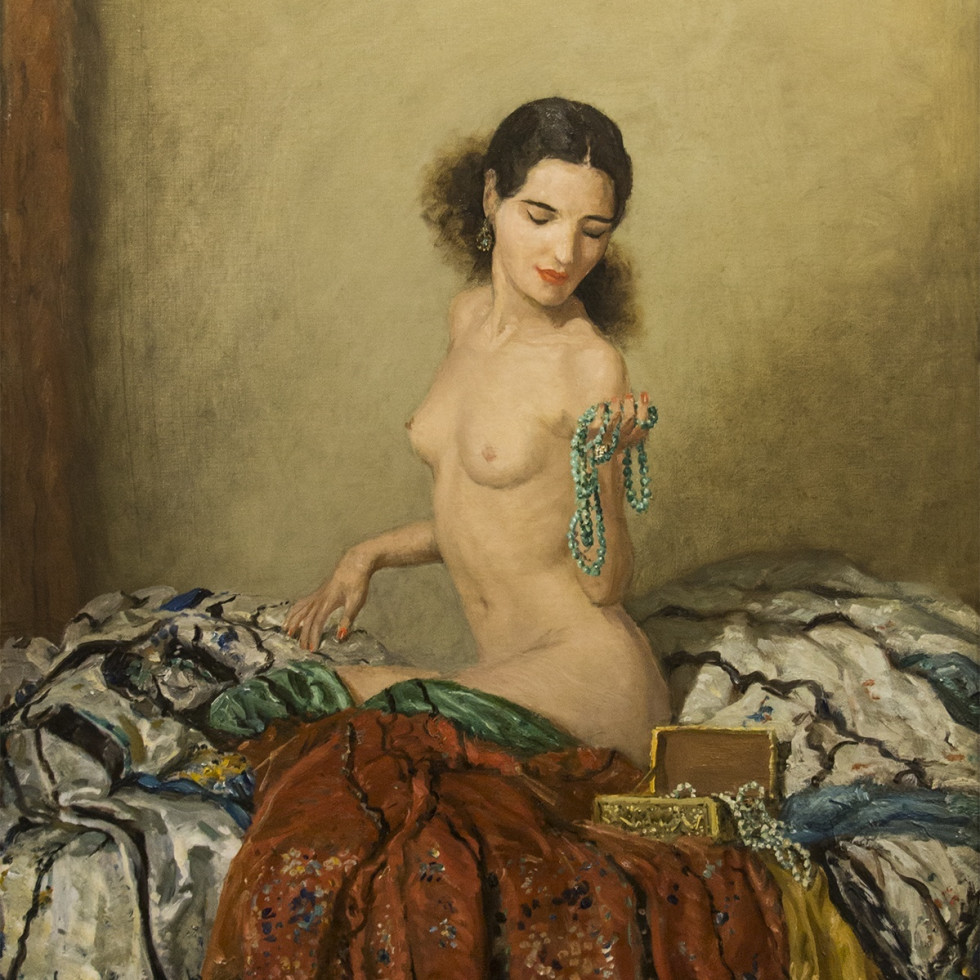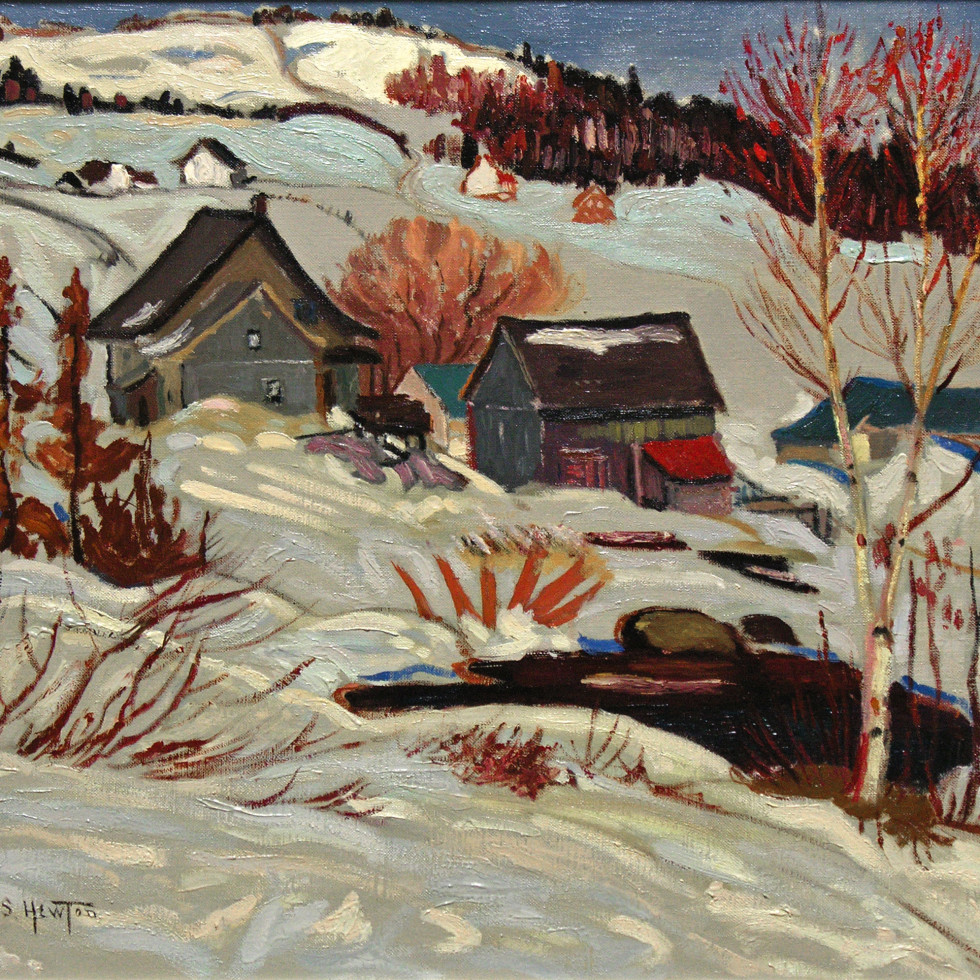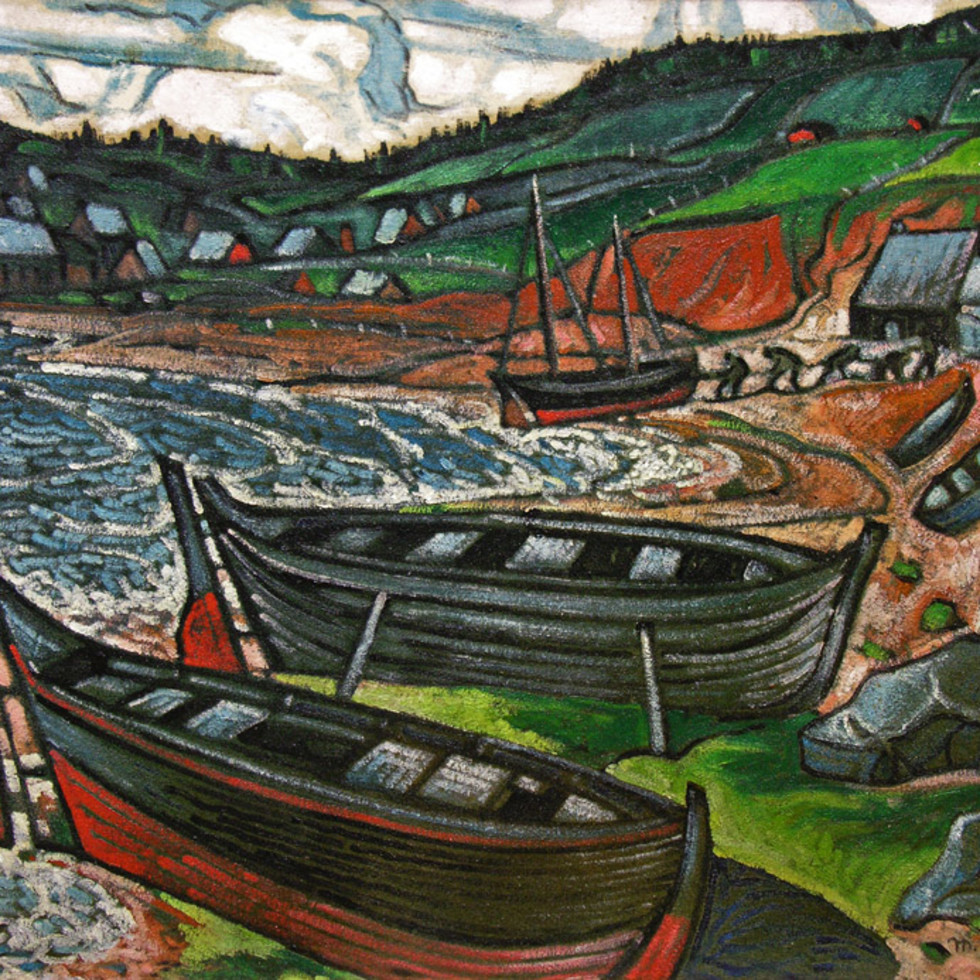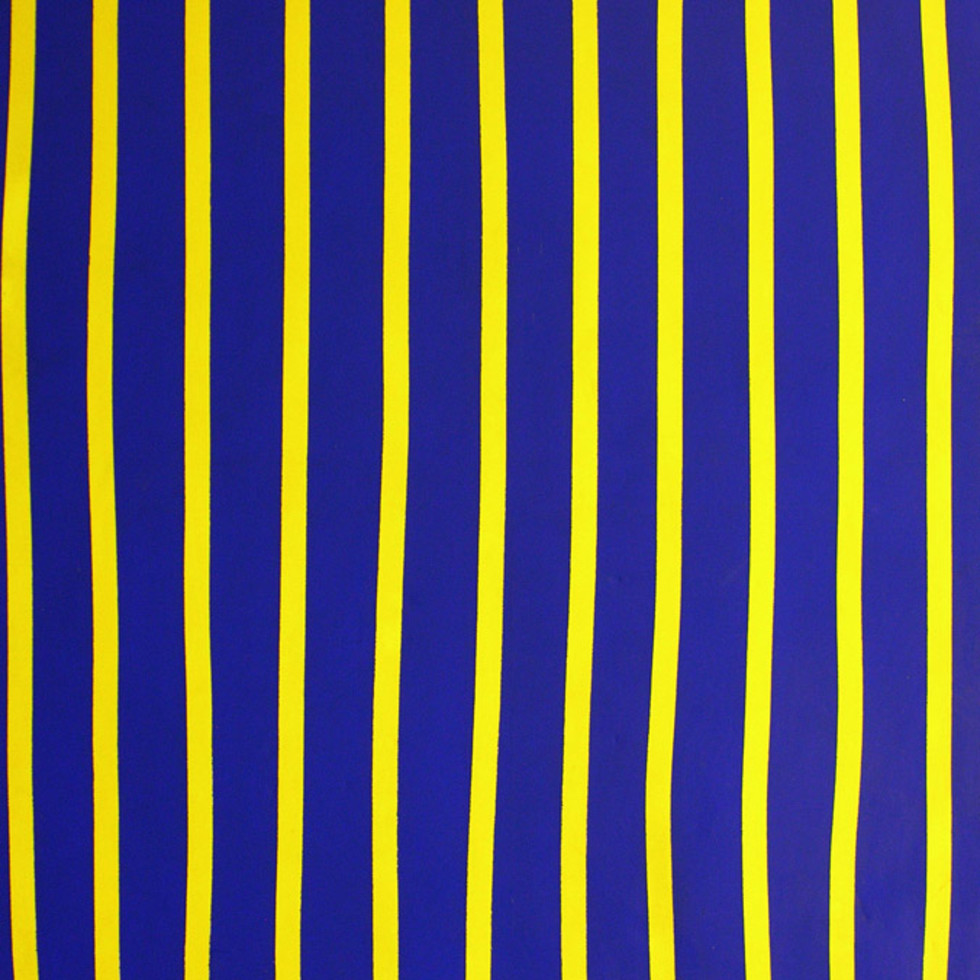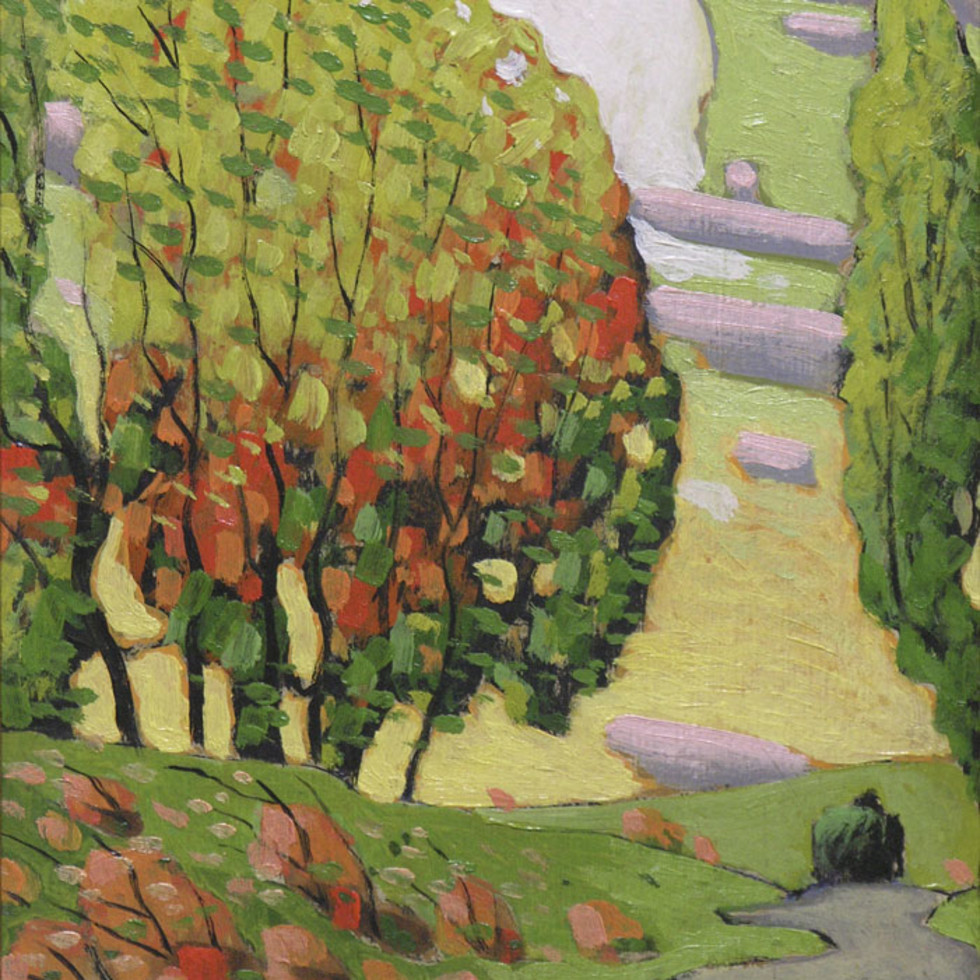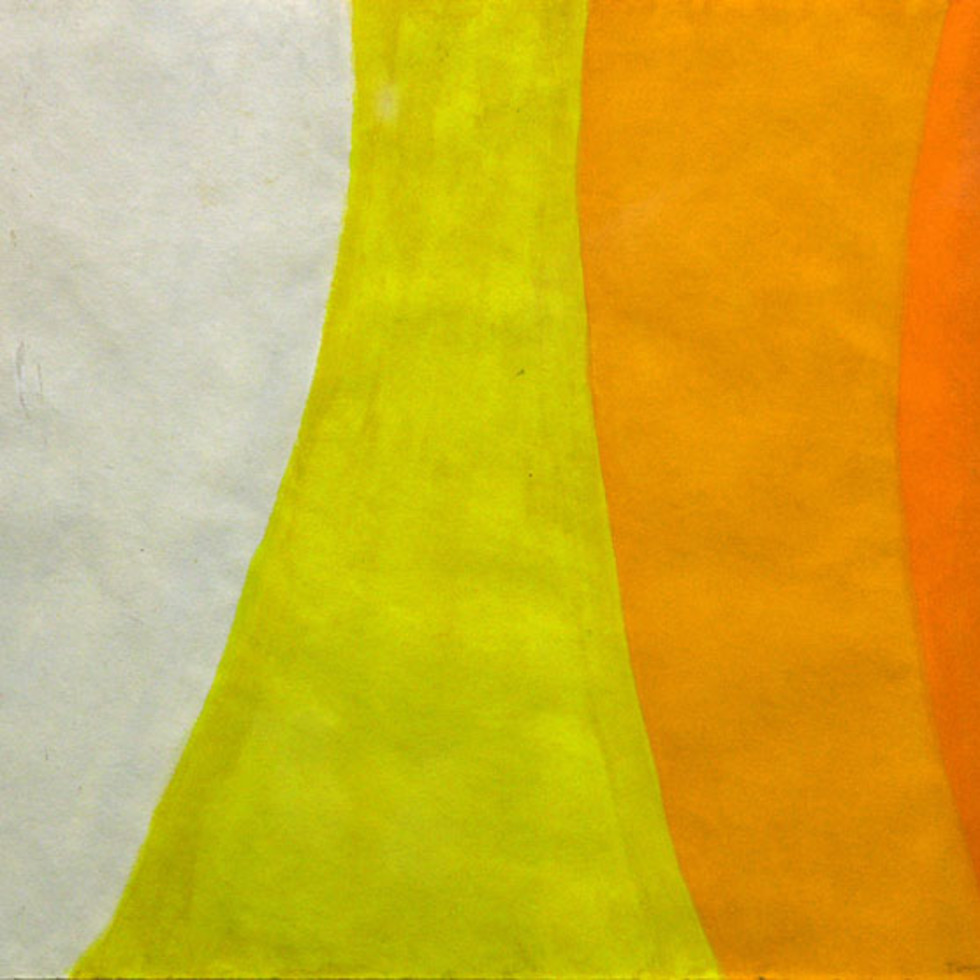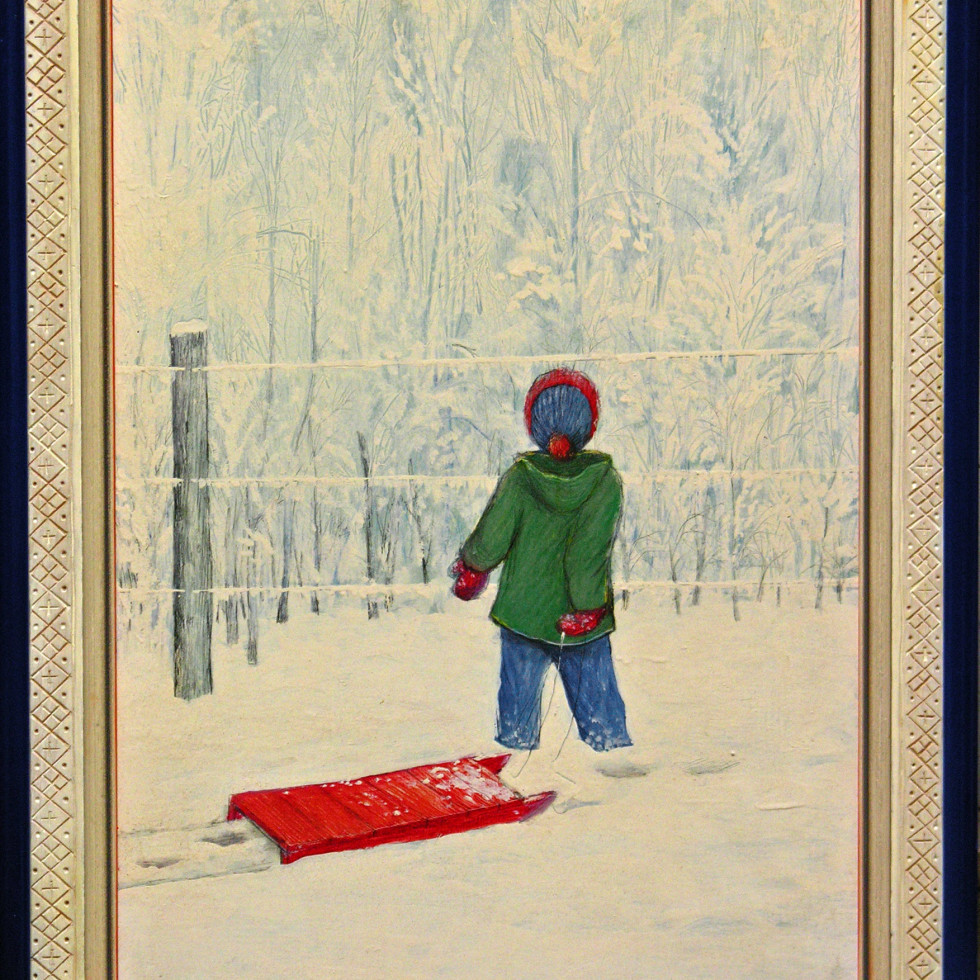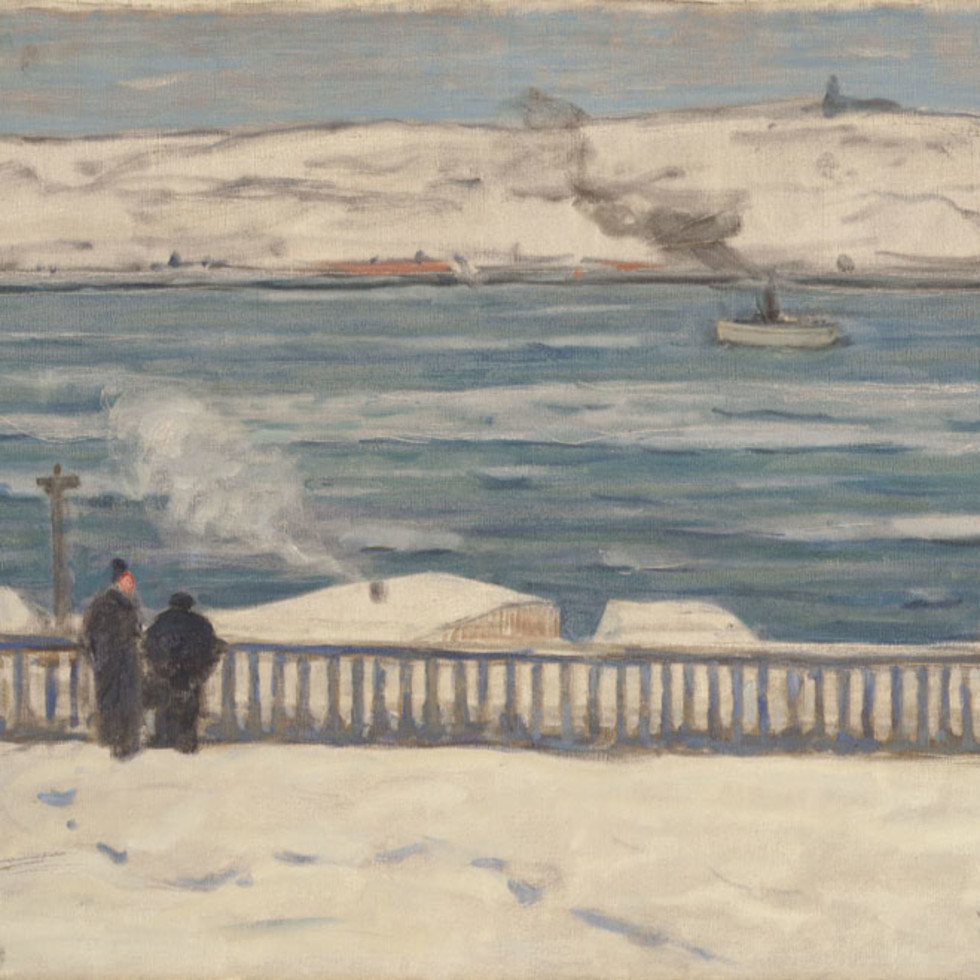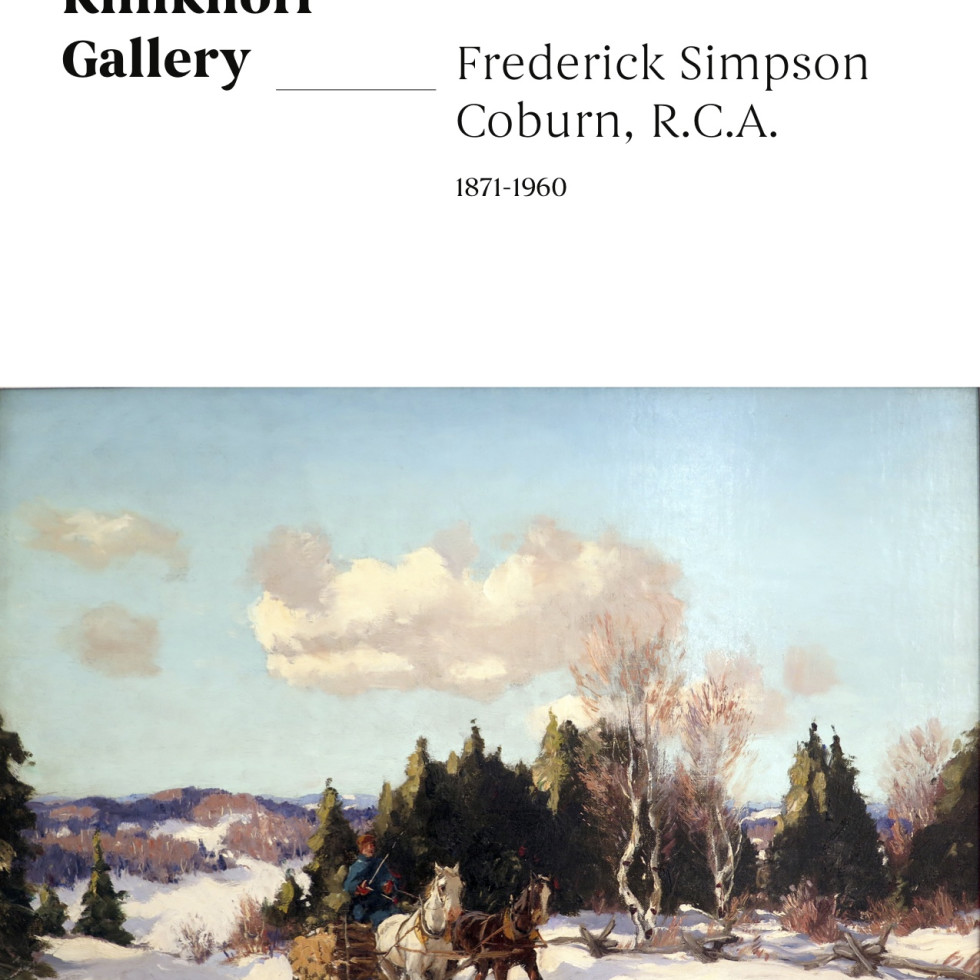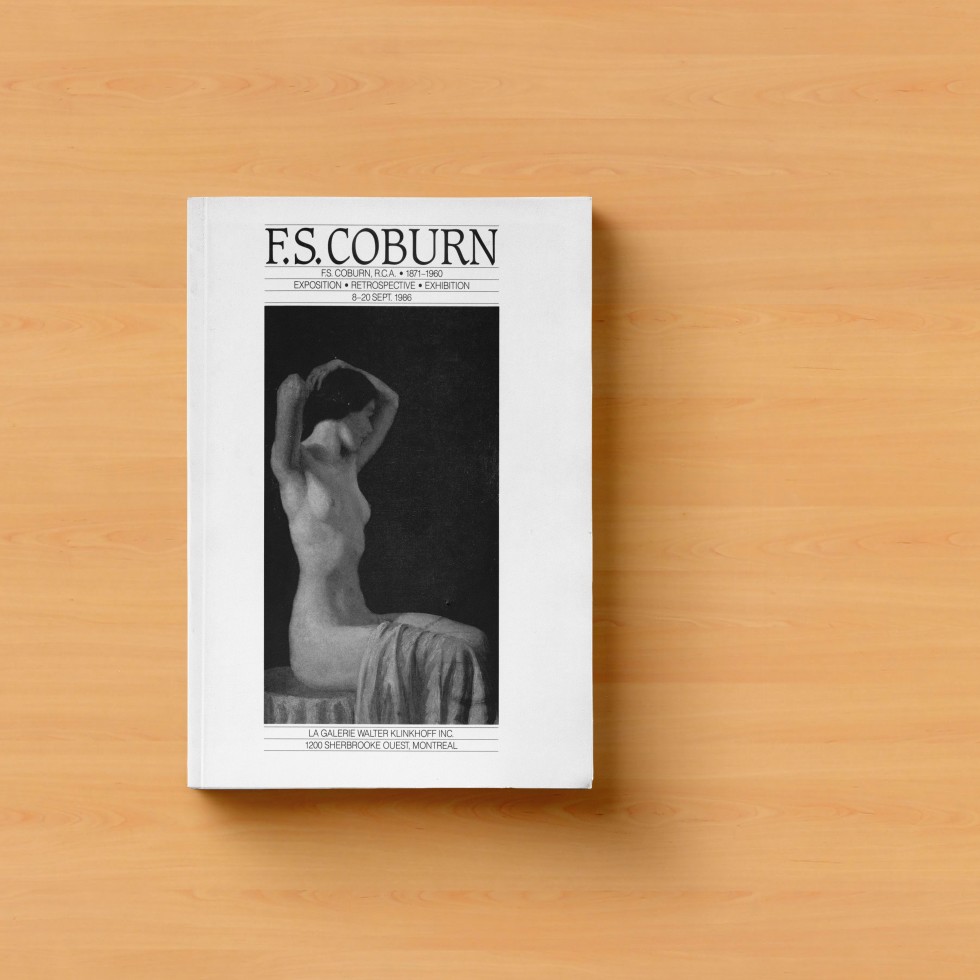Frederick Simpson Coburn
 "Horses have of course been Mr. Coburn's first and greatest love. But next to these are skies – skies clear and cold [or] filled with threatening storm masses through which a hidden sun illumines a distant line of hills; or [...] a warmer late-winter sky dominated by softly floating cumulus [...] Many of the outstanding Canadian artists have painted horses well, but few if any have mastered the technique of painting a sky of comparable truth and artistry."
Gerald Stevens
"Horses have of course been Mr. Coburn's first and greatest love. But next to these are skies – skies clear and cold [or] filled with threatening storm masses through which a hidden sun illumines a distant line of hills; or [...] a warmer late-winter sky dominated by softly floating cumulus [...] Many of the outstanding Canadian artists have painted horses well, but few if any have mastered the technique of painting a sky of comparable truth and artistry."
Gerald Stevens
Frederick Simpson Coburn's paintings of horses hauling logs through snowy Canadian woodlands and bright red sleighs streaming down sunny country roads captures the spirit of an era. Since the late 1920s, Coburn's winter scenes have appeared regularly on Christmas cards and calendars because, as one collector remarked, "the title of his canvas is 'Canada.'" The term "Coburn sky" originated from the artist's unique treatment of luminous winter cloud effects. Gerald Stevens wrote in his biography of the artist (Frederick Simpson Coburn, 1958), "horses have of course been Mr. Coburn's first and greatest love. But next to these are skies - skies clear and cold [or] filled with threatening storm masses through which a hidden sun illumines a distant line of hills; or... a warmer late-winter sky dominated by softly floating cumulus… Many of the outstanding Canadian artists have painted horses well, but few if any have mastered the technique of painting a sky of comparable truth and artistry."
Coburn was born on March 18, 1871, in the small village of Upper Melbourne in Quebec's Eastern Townships, about 90 miles southeast of Montreal. In the close-knit community of his youth, his talent quickly became conspicuous. Soon after enrolling in the Council of Arts and Manufactures School in Montreal he had outgrown its opportunities and went to the Carl Hecker School of Art in New York City. In 1890, at the age of 19, he headed for the Royal Academy in Berlin to begin his studies in the world of international art.
Coburn was drilled in draughtsmanship by Erhentraut and Skarbina in Germany and taught how to reproduce the human anatomy with almost photographic precision. In Paris, he was one of the chosen few to work directly with the master Jean-Léon Gérôme in his studio. While in Paris, Coburn was exposed to the "radical" influence of Impressionism, and the wonders of the bohemian cafés and dance salons frequented by fellow Canadian art students and acquaintances like Toulouse-Lautrec.
Coburn moved to London, where his instruction was in sharp contrast to that he received in Germany. At the Slade School in London, under Professor Henry Tonks, he was instructed to interpret his subject matter instead of striving for a perfect likeness of it. Later, his fascination with the Hague School took him to Holland, where his acquaintance with the renowned Maris brothers and J.H. de Weissenbruch was to have a lasting influence on his art. During this Dutch period he experimented with different palettes and painted the thatched cottages, placid cattle, sombre beaches and windmills of the surrounding countryside. His Dutch interiors caught the essence of the local inhabitants with whom he stayed.
While abroad, Coburn not only mastered a variety of art techniques, he also became fluent in the French, German, Dutch and Flemish languages. Though travelling frequently he was still able to maintain a close connection with Quebec.
In 1896, at the age of 25, he teamed up with the Quebec poet, Dr. William Henry Drummond, to illustrate Drummond's first volume of poetry on rural Quebec society, The Habitant (1897). For this, Coburn spent weeks living with habitant families, sketching his subject matter in intimate detail. His subsequent illustrations reflected the soul of the habitant society. He went on to illustrate all of Drummond's works.
Coburn was sought after by another Quebec poet, Louis Fréchette. Fréchette who was impressed with Coburn's work and commissioned the artist to illustrate his book, Christmas in French Canada, 1899, followed by the French edition, La Noël au Canada, 1900. A long and productive collaboration was eventually established with Drummond's publisher, G.P. Putnam Company of New York, for whom Coburn illustrated many special classical editions of Alfred Lord Tennyson, Charles Dickens, Edgar Allan Poe, Washington Irving, Oliver Goldsmith, Robert Browning, and others. He also illustrated many magazine articles and covers. These illustration assignments were the key to Coburn's financial survival during his years of European study.
In 1897, while living in Antwerp, Belgium and studying under Albrecht de Vriendt, Coburn came first in his class of thirty students at the Institut Supérieur des Beaux-Arts. The following year he won the Belgian Government's "Goot" subsidy, which entitled him to three years of tuition-free study. This also helped to alleviate some of the poverty he endured while abroad.
It was in Antwerp that he met his future wife, the talented Belgian artist, Malvina Scheepers. Together, they established a studio-home in Coburn's village of Upper Melbourne and a pied-à-terre in Montreal.
During the period of the early 1900s, Coburn began to integrate the advanced techniques he had learned from the Europeans with his own vision. At first, he focused on floral studies, portraits, and spring and summer landscapes of the Eastern Townships. In these canvases the Dutch influence was obvious. Then, sketching trips with fellow artist, mentor and close friend, Maurice Cullen, brought about a sudden change. Inspired and challenged by Cullen's fascination with the Canadian winter, Coburn rejected his sombre, Old-World palette to experiment with vivid colours. Like his Quebec colleagues Clarence Gagnon, Suzor-Coté, James Morrice, Maurice Cullen, and others who had returned to Quebec from Europe, he was determined to depict the Canadian winter atmosphere, with its dazzling light, sharp colours and mysterious snow shadows. The native instincts he had so successfully tapped for his habitant illustrations came to full fruition in his oil paintings that reflected the culture and esprit of the times. What began as an experiment resulted in enthusiastic public acclaim.
In 1928, at the age of 57, Coburn was elected a Member of the Royal Canadian Academy of Art (R.C.A.). He became a Senior Member in 1941. His paintings eventually hung in galleries across the country and in museums and private collections as far away as Australia and Japan.
Coburn's work was exhibited in Canada and abroad. In 1928, he exhibited two canvases at the Imperial Gallery of Art Exhibition in London, England. In 1929, he won the Art Association of Montreal's Jessie Dow prize for his painting, March Morning. In 1932, the Arts Club of Montreal held a special exhibition of his Drummond illustrations. In 1936, he received an honorary D.C.L. from Bishop's University in Lennoxville, Quebec. In 1938, he exhibited two paintings in the Tate Gallery's A Century of Canadian Art exhibition in London-to highlight a few of his achievements.
Suddenly, in 1933, when Coburn was 62-years-old, his wife, Malvina, died while they were on vacation in Paris. Coburn was devastated. Consumed with grief, and disillusioned by being stereotyped as an artist who could only paint the winter scenes with horses for which he had become renowned, Coburn lost his motivation. Fellow artist and friend, Edmond Dyonnet, encouraged him to meet the beautiful model and professional dancer, Carlotta. His ensuing 27-year relationship with her became his inspiration-not only as an artist, but as a dancer and photographer.
Encouraged by the public's unrelenting demand, Coburn strove to perfect his winter scenes. As William Colgate wrote in his book, Canadian Art: Its Origin and Development, 1943, "today, scarcely a Canadian painter enjoys a higher reputation… He evidently regards a subject as an opportunity to produce effects of light and subtle colour harmonies."
Concurrently, Coburn painted lifesize canvases of Carlotta in the fabulous dance costumes she created for her performances. These including the paintings Tango, Bolero, Rumba de Cuba and Cake Walk, which were exhibited at the 53rd Art Association of Montreal's Spring Show in 1936. He painted Carlotta nude, draped in flowing chiffons and Chinese silks. Coburn built a special platform on the hill behind his Melbourne studio, where he shot breath-taking photographs of her dancing in full gypsy skirts billowing against cumulus clouds and sky. Some of these photos were later published on the covers of American dance magazines. Coburn also fulfilled his dream of learning how to dance, and together with Carlotta and her dance partner, Alvarez, he established a dance studio in Montreal. It was there, surrounded by his paintings of Carlotta and his 'family' of fellow artists and dancers, that Coburn spent some of his happiest moments.
On the afternoon of May 26th, 1960, Frederick Simpson Coburn died peacefully in his Melbourne studio at 89 years of age.





